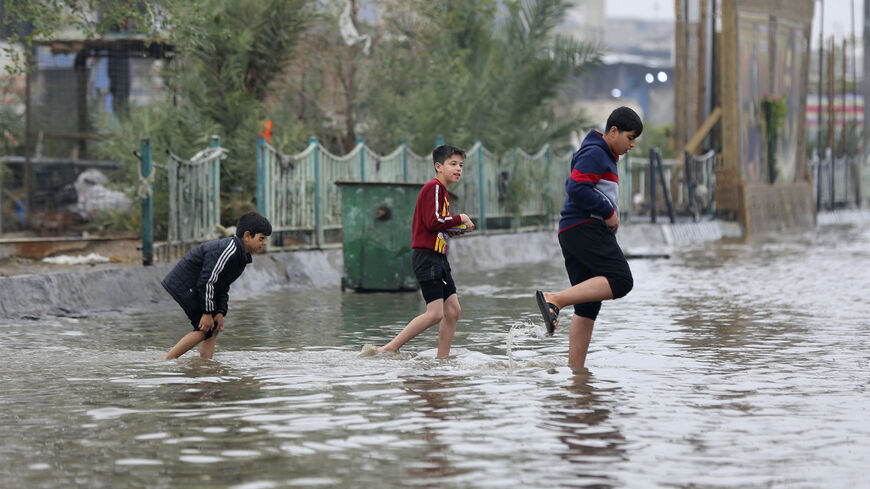Severe floods in Iraq this week have left several dead as the country faces considerable other environmental risks.
The heavy rain that began on Tuesday has affected several parts of the country, including the Kurdistan Region, the northern city of Kirkuk, the capital Baghdad and the central Babil province. The rain continued Wednesday and Thursday, causing severe flooding.
بسبب الأمطار حدثت فيضانات وجريان أودية في العراق 🌧
— أماكن العراق 🇮🇶 IRAQ PLACES (@iraq_placess) April 13, 2023
السؤال ماذا لو كان لدينا سدود جديدة؟ pic.twitter.com/LCKqJrD3mQ
Agence France-Presse reported on Thursday that three people were electrocuted in Babil during the storm. Another two were killed by lightning strikes in the Kurdistan Region, according to Arabic news reports.
Data from AccuWeather still showed precipitation over parts of Iraq Thursday evening local time, especially in the north.
Why it matters: Flooding is a regular occurrence in Iraq and late March saw flooding throughout the country.
At the same time, Iraq is also experiencing desertification. The situation has worsened in recent years, and Iraq is often described as one of the most at-risk countries in the world to climate change. Iraq experiences relatively high water insecurity thanks to a lack of rainfall and poor water management.
The heavy rain has some potential benefits, despite the dangers. The water levels in eastern Iraq's al-Azim reservoir rose 30%, the Kurdish Iraqi news outlet Rudaw reported on Thursday.
Know more: Other parts of the Middle East were also affected by the heavy rains this week. Iranian officials said they urged people in Lorestan province in the west to evacuate due to the flood risk, the official Islamic Republic News Agency reported on Wednesday.
The Rahma reservoir in Jordan is also filled, Jordanian news outlets reported on Tuesday.








